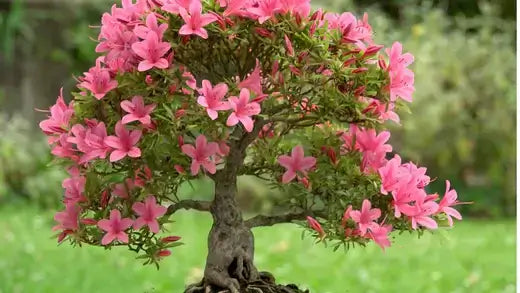The Storied Journey of Bonsai Plants: From Ancient Asia to Southern Porches
Let me tell you about the little trees with tales of bonsai plants. These tiny wonders have roots more profound than an old oak out back. The story of bonsai, "planted in a tray," began over a thousand years ago in ancient China. They called it "penjing," a practice that wasn't just gardening. It was art, philosophy, and soul all wrapped up in one. Monks carried the idea to Japan, where bonsai became what we know today: mini trees with mighty attitudes.
Now, imagine this. In Japan, samurai warriors used bonsai to reflect on life's balance. With swords in hand and hearts of steel, these soldiers would kneel by these delicate plants to steady their minds. Funny. The same folks who could slice through a bamboo forest with one swing were out here trimming roots and snipping leaves like they were tending to a baby.
Here in the South, we've always loved a good story and a connection to nature, so bonsai fits right in. They made their way to American soil in the early 20th century, but it wasn't until after World War II that they took off. Soldiers stationed in Japan brought these trees home as souvenirs; boy, they created a stir. Folks in the South started seeing these pint-sized marvels as the perfect porch decoration. Imagine sipping sweet tea, gazing at a bonsai that looks like a full-grown tree straight out of a fairy tale. That's living.
Bonsai Plants: A Symbol of Patience and Southern Charm
Here's the kicker, though bonsai plants are not for the impatient. Growing and shaping one takes time, love, and a dash of stubbornness. Sounds familiar, right? Here, we know all about slow cooking, slow talkin', and livin'. Bonsai fits that rhythm perfectly. You can't rush nature, and that's a lesson every Southerner learns early, whether from tending gardens or waiting for the peach cobbler to cool.
People say bonsai symbolizes harmony and patience, but I'd argue it also shows Southern ingenuity. You take something big and make it small, yet keep all its grandeur. That's the bonsai way and maybe the Southern way, too.
So next time you see one of these tiny trees, think about the journey it's been on. From ancient Asia to samurai warriors to sitting proudly on your granny's front porch, bonsai proves that small things can carry significant legacies.
Taking care of Bonsai plants can be very hard to do, especially if the gardener does not know these beautiful trees and plants.
When considering growing a Bonsai, research to find exactly what type of care and maintenance it will need.
Some foreign soil is made and created only for Bonsai plants and will have the exact mixture of nutrients, grit, and soil to help these beautiful plants grow and become beautiful. This soil is also very reasonably priced and will not cost a fortune.
These plants will take more care than other houseplants, so don't expect them to grow overnight or in just a few weeks. These plants can take several months and years to grow because they are such slow growers. Set up a rigorous watering schedule because if they dry out, the plant's damage is done.
They may also need to be often repotted to allow them to grow and have plenty of room to grow. The soils for Bonsai plants will be coarser than regular soils and enable significant irrigation for these crops. There are also nutrients and other fertilizers made especially for Bonsai plants and purchased at home and garden centers. Bonsai trees are beautiful when they become fully grown and add a distinctive Asian accent to a room or décor once they have become mature. These plants are great for the beginning gardener looking for a challenging plant to grow indoors, and they will be amazed at the beauty they will offer. Go ahead and start growing one of these fantastic plants because they will teach us a lot about gardening when growing. If the first plant does not survive, do not give upstart another one and learn from mistakes. These are very challenging plants to grow, but they are worth the time and effort.
Source of Information on Bonsai Trees and the Soil Needed for them
https://www.tnnursery.net


